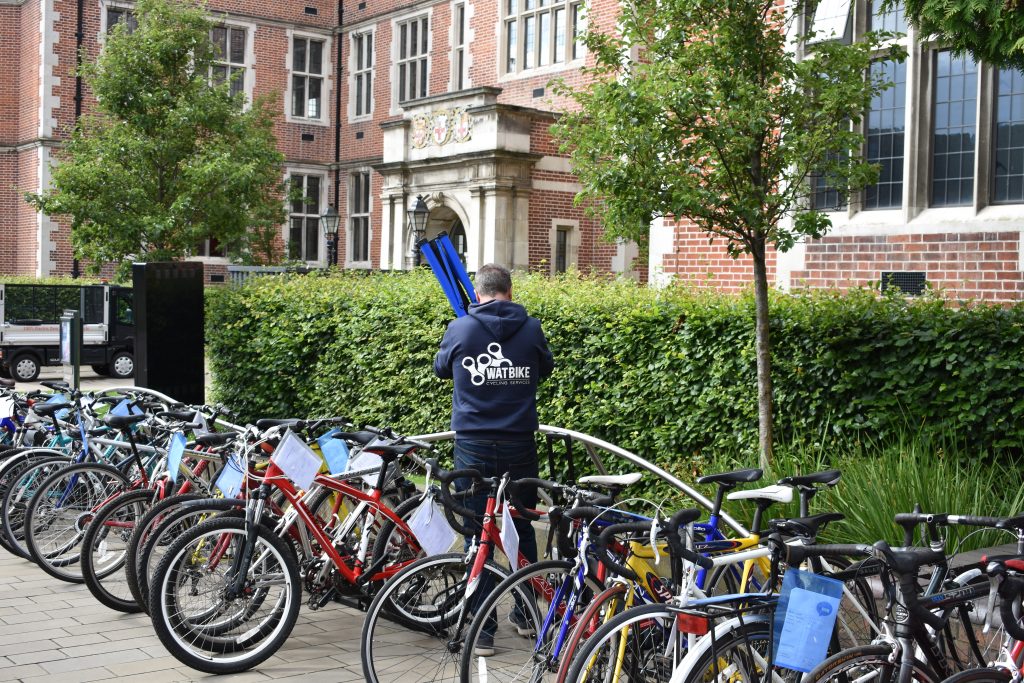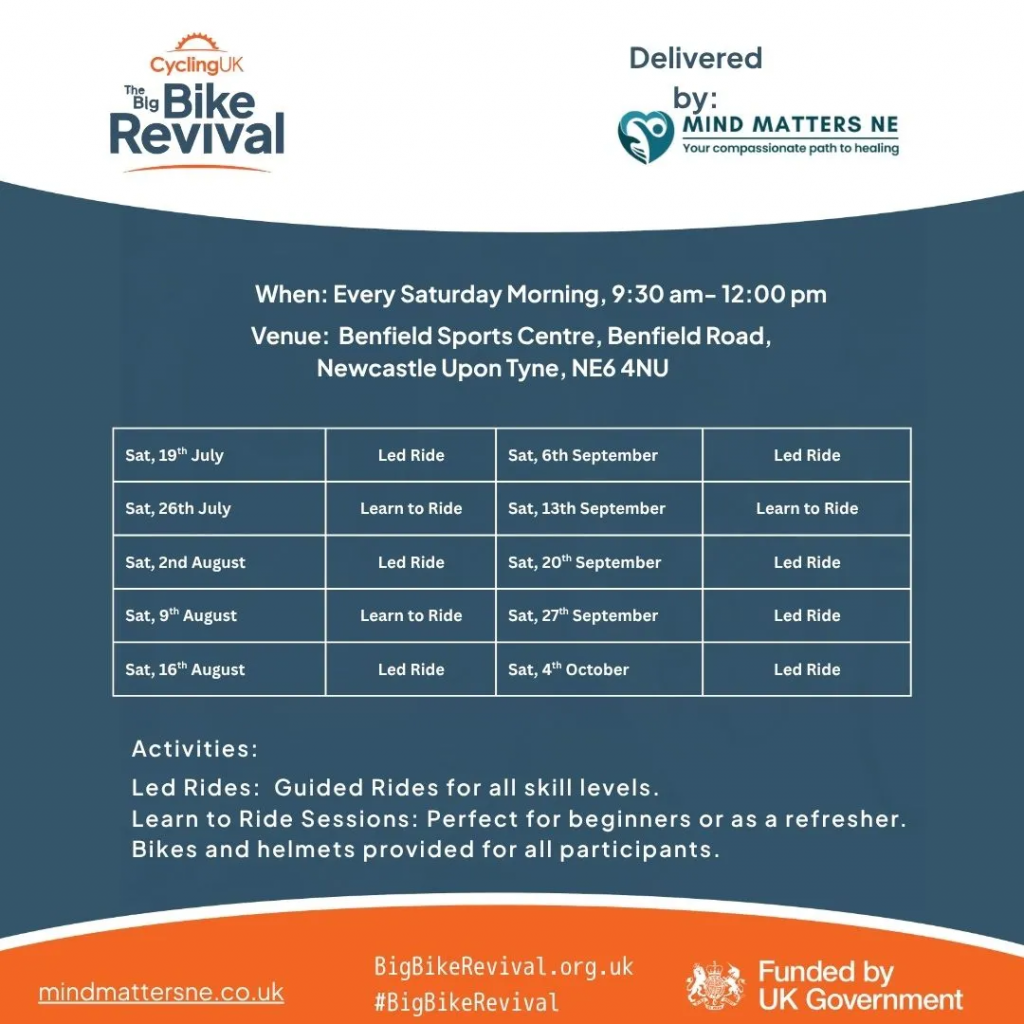Cycling is a great way to get active, travel sustainably, and save money on transport costs. While commuting by bike is more popular in the summer months, riding through autumn and winter can be just as enjoyable (with the right preparation)!
Here are our top tips to help you stay warm, visible, and confident on your winter commute!

- Prepare your bike
A well-maintained bike is essential during the colder, wetter months.
- Attend a Dr Bike session to ensure it is road safe. Find out about our upcoming Dr Bike dates here.
- Invest in winter tyres that are wider and puncture resistant if you can
- Add mud guards to your bike if possible, they help to protect you and your bike from dirty water and dirt build up on your bike.
- Keep your bike clean to maintain a good condition level
- Staying visible
Winter commuting often means riding in the dark. Make sure you are visible on the roads.
- Add plenty of lights to your bike, and make sure they meet the legal requirements. Check out Cycling UK’s guide to cycle light regulations that provides detailed guidance.
- Wear reflective and bright clothing to increase your visibility to other road users.
Did you know colleagues can buy reflective clothing and bike lights under the University Cycle to Work scheme?
- Consider your road positioning and whether it needs to change in low lighting. To learn more, read the Cycle Scheme ‘Road Positioning for cyclists’ page.
- Keep warm and dry!
- Invest in some warm and waterproof layers and a bag to keep you and your belongings dry on your commute.
- Cycling UK recommend thermal gloves and socks, cycling glasses and a buff to keep your head warm under your helmet.
Did you know colleagues can purchase cycling and safety equipment and via the Cyclescheme?
- Plan Ahead
- Check the weather forecast before heading out on a long ride
- Plan your route in advance and test it out in daylight to build confidence
- Consider sharing your location with a close friend or family member when you leave and let them know when you have arrived at home or campus
- Stay alert to risks and be aware of the noises around you.
- Secure Your Bike
- Only secure your bike to purpose-designed Sheffield stands, racks or bike parking systems
- Ideally use at least one ‘Sold Secure’ certified bicycle lock of at least bronze standard
- Double lock your bike where possible using two locks (one at the front and one at the back)

Thank you for reading, happy cycling and stay safe this winter!
Email us at sustainable-campus@newcastle.ac.uk to join the universities Bicycle Users Group on Microsoft Teams!
















